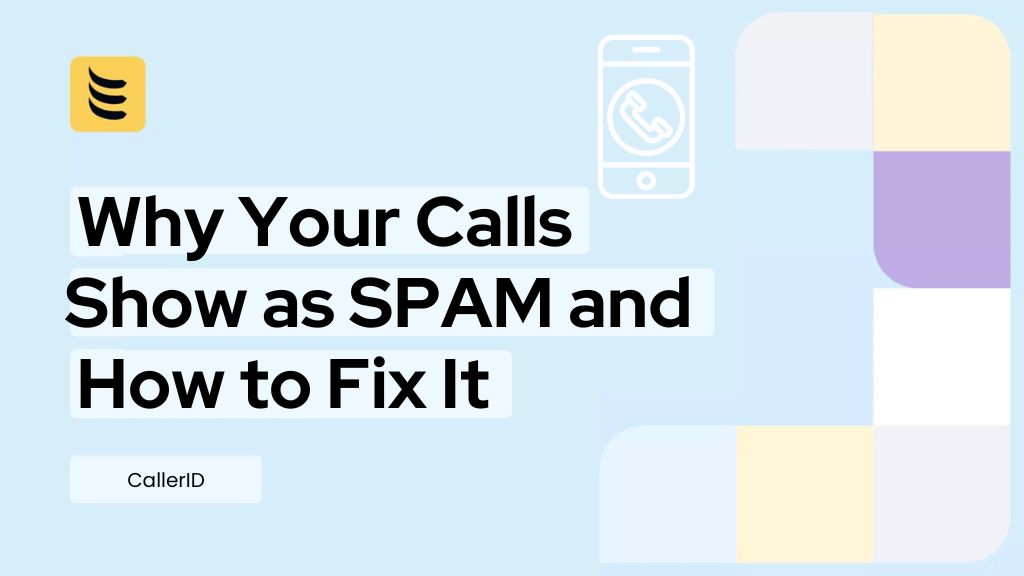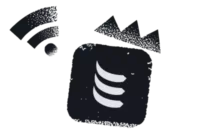Hey, so you know how annoying it is when you’re trying to call someone, but your call shows up as spam on their phone? Yeah, it’s a bummer. Well, it turns out there’s a whole science behind this, known as Caller ID Reputation. I’ve been digging into this lately, and it’s surprising how much it can affect whether your calls get through or not. I mean, did you know that a whopping 76% of calls are ignored if they come from an unknown number or are flagged as potential spam? Crazy, right? Fixing this isn’t exactly a walk in the park, but it’s definitely doable. I’ve learned a few tricks along the way that I think might help you out.
Understanding the Concept of Caller ID Reputation
Caller ID Reputation is more than just a name or a number that pops up on your screen when you receive a call. It’s a complex system that can significantly influence whether your calls get answered or not. Essentially, it’s a score assigned to your phone number by mobile operators, which reflects the likelihood of your call being spam or a scam.
So, how does this work? Mobile operators maintain a database of phone numbers, each with its reputation score. This score is influenced by various factors such as the number of complaints associated with the number, the frequency of calls made, and the type of calls (i.e., telemarketing, scam, etc.).
For instance, if a number is frequently involved in scam calls, its reputation score will plummet. Consequently, calls from this number might be flagged as potential spam, deterring recipients from answering. On the other hand, a number with a good reputation score, say from a well-known business, is more likely to be trusted, increasing call acceptance rates.
The tricky part here is that your Caller ID Reputation can be negatively impacted even if you’re not directly involved in spammy behavior. For instance, if your number is spoofed by scammers, it could lead to a flood of complaints, tarnishing your reputation score.
In a nutshell, understanding and managing your Caller ID Reputation is crucial if you want to ensure your calls are answered and not dismissed as potential spam. It’s a delicate balance, but when done right, can significantly improve your communication effectiveness.
Why Your Calls are Labelled as Spam
Ever wondered why your calls are getting flagged as spam? It’s a frustrating experience, especially when you’re sure you’re not involved in any dubious activities. The reasons behind your calls being marked as spam can be complex, often involving intricate algorithms and data analysis.
For starters, phone carriers and third-party apps use advanced software to identify potential spam calls. They rely on a vast database of numbers reported as spam by users. If your number somehow ends up on this list, your calls may be labelled as spam. This could happen if you frequently call numbers that don’t have you in their contacts, or if multiple people report your number as spam.
Another factor could be the frequency of your calls. If you’re making an unusually high number of calls, especially to different numbers, your calls might be flagged as potential spam. This is a common tactic used by spam callers, so carriers and apps are on the lookout for this pattern.
In 2019, Truecaller reported that the number of spam calls globally increased by 18%. The US topped the list with an average of 28 spam calls per person each month. With such a high volume of spam calls, carriers are employing stricter measures to protect users, which could inadvertently flag legitimate calls as spam.
Finally, if you’re calling from a number that’s not registered in your name, or if your number has been spoofed by spammers, your calls could be marked as spam. In these cases, it’s crucial to contact your service provider to resolve the issue.
So, if your calls are being labelled as spam, it might be due to one of these reasons. It’s an inconvenience, no doubt, but understanding the reasons can help you take steps to rectify the situation.
The Impact of Caller ID Reputation on Communication
When it comes to Caller ID Reputation, there’s a direct link to call answer rates. If your business number is flagged as spam or fraud, it’s highly likely that your calls will go unanswered. On the other hand, if your Caller ID has a solid reputation, your calls are more likely to be picked up.
Here’s an example. A study by First Orion found that call answer rates plummeted to 11% when the Caller ID was flagged as ‘Potential Spam’. In contrast, a reputable Caller ID had a 52% answer rate. That’s a significant difference and one that can seriously impact your business communication.
But what about ROI? Well, if your calls are going unanswered due to a poor Caller ID reputation, it means your outreach efforts are wasted. You’re spending money on calls that aren’t connecting, which can negatively affect your ROI.
Moreover, your reputation is at stake. If your business number is associated with spam or fraud, it can hurt your brand image. It’s not just about missed calls, it’s about the perception people have of your business.
And let’s not forget your employees. If they’re making calls that aren’t being answered, it can be demotivating. It’s a waste of their time and it can lead to frustration.
So, ensuring your Caller ID has a good reputation is not just about improving call answer rates. It’s about safeguarding your ROI, protecting your brand image, and maintaining employee morale.
How to identify whether your calls are being marked as spam
It’s a tough pill to swallow, but sometimes your calls might be marked as spam. So, how do you figure out if that’s happening? Let’s get into the specifics.
One telltale sign is a sudden drop in your call response rate. If you were getting a decent response earlier and suddenly it’s gone down drastically, your calls might be getting flagged as spam. You might find that people aren’t picking up your calls or they’re ending abruptly. It’s frustrating, I know.
Another way is to directly ask your contacts. It might feel awkward, but it’s better to know the truth. If they tell you that your call showed up as ‘Potential Spam’ or ‘Scam Likely’, then it’s clear.
Now, how do you monitor this in real-time? There are a few tools out there that can help. For instance, Truecaller has a spam identification feature. If your calls are being marked as spam, Truecaller will show a red warning sign when you dial a number.
Another tool is RoboKiller. It’s a bit more high-tech. It uses an algorithm to predict whether a call is spam or not. If your calls are getting blocked, it’s a strong indicator that they’re being marked as spam.
It’s a bit of a detective job, but it’s worth it. Getting your calls marked as spam can seriously hamper your communication efforts. So, keep an eye out for these signs and use the tools available to stay on top of things. It’s not an easy task, but it’s definitely manageable.
Steps to Improve Your Caller ID Reputation
Improving your Caller ID reputation isn’t rocket science, but it does require a few strategic moves. Let’s start with the basics: Be consistent. Use the same number to make your calls. This helps to establish trust and familiarity with your recipients.
Next, always ensure you’re providing accurate and up-to-date Caller ID information. If your business has recently changed its name or location, make sure this is reflected in your Caller ID details. You don’t want to confuse your callers with outdated or misleading information.
Now, let’s talk about partnering with Caller ID reputation monitoring platforms. Companies like Hiya and Numeracle offer services that help you monitor and manage your Caller ID reputation. They provide real-time insights into how your calls are being perceived and flagged by recipients and carriers. This data can help you make necessary adjustments to improve your reputation.
Another step is to maintain communication with carriers. If your calls are being flagged as spam or fraud, it’s crucial to work directly with the carriers to understand why. They can provide insights into their spam algorithms and help you make changes to avoid being flagged in the future.
Lastly, respect the rules. Stick to the guidelines set by the Federal Trade Commission for telemarketing and robocalls. Violating these rules can lead to hefty fines and a tarnished Caller ID reputation.
Remember, improving your Caller ID reputation is a marathon, not a sprint. It takes time, patience, and consistent effort. But the payoff – increased trust and improved call answer rates – is well worth it.
Conclusion
Remember, your Caller ID reputation matters. If your calls are showing up as spam, it’s high time to take action. Avoid the mistake of ignoring this issue, because it can lead to missed connections and potential business opportunities. The first step? Look into your phone service provider’s policies and guidelines. It might take some time, and yes, it can be a bit of a hassle, but it’s worth it. And don’t forget, consistency in using your business number can help improve your reputation. It’s not an overnight fix, but with patience and persistence, you’ll get your calls back in the ‘trusted’ category.




